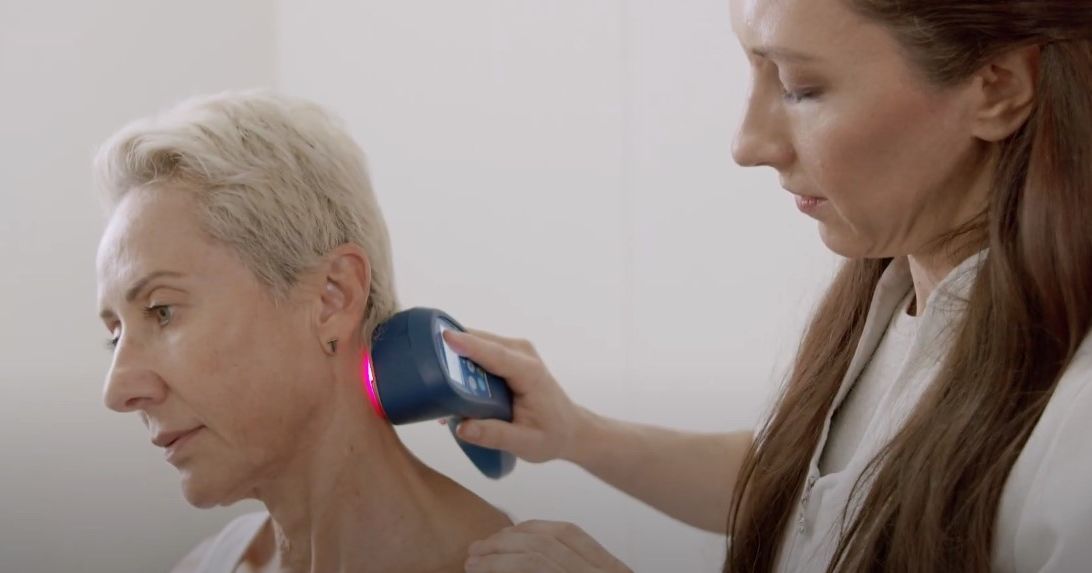
Relief for Coccyx (Tailbone) Pain: Dr Linda Schiller's Experience
Tailbone pain—also known as coccydynia—is an often overlooked but extremely uncomfortable condition that can significantly affect day-to-day life. Although the coccyx is a small structure at the base of the spine, when irritated or injured, it can cause persistent pain that worsens with sitting, movement, or pressure. Generally people have trouble finding someone who can help them with their coccyx pain. Dr Linda Schiller has treated children as young as 10 years old to 80 years old with this debilitating coccyx pain.
The coccyx, commonly called the tailbone, is made up of three to five small bones that may be fused or separate. It connects to the sacrum with a disc and strong ligaments, creating a joint that moves very little. However, when force or pressure is applied—such as during a fall, childbirth, or from long periods of sitting—these structures can become inflamed or misaligned, resulting in tailbone/Coccyx pain.
While coccyx pain can occur in anyone, it is more commonly experienced by women. This is due to anatomical differences in the pelvis, including its broader shape and the angle at which the coccyx is positioned, which can place additional strain on the tailbone when seated. Having said this Dr Linda Schiller has seen plenty of males with coccyx pain of all ages.

Symptoms of Coccydynia:
Symptoms of coccydynia often include sharp or aching pain when sitting, standing from a seated position, during bowel movements, or in women, around the menstrual cycle. In some cases, the pain may feel dull and constant; in others, it can be sharp and stabbing, especially after prolonged sitting.
If left untreated, coccydynia can become chronic. Early assessment and targeted treatment are essential for preventing long-term discomfort and restoring function.

Treatment by Dr Linda Schiller:
Dr Linda Schiller in Gnangara, has over 28 years of clinical experience and a strong track record of successfully treating patients with coccyx pain. Her gentle, evidence-based approach has helped many individuals who had previously struggled to find relief. Patients often travel from across Perth and even interstate to see Dr Linda Schiller, following referrals from general practitioners, physiotherapists, Chiropractors , and other healthcare providers.
What sets Dr Schiller’s approach apart is her focus on correct diagnosis and tailored care. She understands that every case is different and takes the time to assess the actual coccyx problem in detail through examination and imaging. Surrounding structures like the pelvis and lumbar spine are also not ignored, which often play a role in ongoing tailbone discomfort.
Specific dynamic x-rays can be important to assess stability of the last segments of the coccyx joints. In some cases, an internal coccyx adjustment may be required. Though it sounds confronting, this is a safe and well-practised procedure used to gently realign the coccyx and relieve pressure on irritated ligaments. The procedure is always done with patient consent, is brief (typically 2–5 minutes), and can be stopped at any time.
To support recovery and enhance comfort, Dr Schiller combines her care with other treatment techniques available at Lakeside Laser.
Treatment may include:
- Internal coccyx adjustment
- Cold laser therapy to reduce inflammation and promote healing
- Chiropractic adjustments and mobilisation
- Postural and ergonomic advice for sitting and movement
- Stretches and exercises to support pelvic and spinal function
Many patients also benefit from the use of a coccyx cushion with a cut-out section to reduce direct pressure on the tailbone while sitting as to not delay healing.
Lakeside Laser offers HICAPS for on-the-spot private health fund claiming, making appointments quick and convenient.
Dr Linda Schiller is committed to providing a safe, respectful, and highly personalised experience for every patient.
If you’re experiencing tailbone pain—whether it’s from a known cause or something more mysterious—book an appointment today and start your journey toward relief.
Location: 54 The Fairways, Gnangara, WA 6077 (By Appointment only) Phone: 0468 429 111 Book online: https://corrective-chiropractic-pty-ltd.au4.cliniko.com/bookings#service


